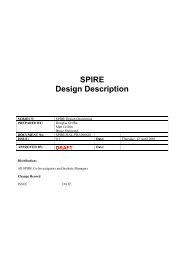gambling in alberta - Research Services - University of Lethbridge
gambling in alberta - Research Services - University of Lethbridge
gambling in alberta - Research Services - University of Lethbridge
Create successful ePaper yourself
Turn your PDF publications into a flip-book with our unique Google optimized e-Paper software.
A similar study was conducted by the Canada West Foundation <strong>in</strong> 2000 whereby a stratified<br />
random sample <strong>of</strong> 4,000 registered charities operat<strong>in</strong>g <strong>in</strong> Canada were mailed a survey, with<br />
647 questionnaires be<strong>in</strong>g returned (16% from Alberta) (Azmier & Roach, 2000). Thirty four<br />
percent reported that their organization participated <strong>in</strong> provid<strong>in</strong>g some form <strong>of</strong> charitable<br />
<strong>gambl<strong>in</strong>g</strong> between 1995 and 1999. This percentage varied considerably by sector, with 62% <strong>of</strong><br />
charitable health organizations us<strong>in</strong>g this form <strong>of</strong> fundrais<strong>in</strong>g compared to only 8% <strong>of</strong> religious<br />
organizations (Azmier & Roach, 2000). Similarly, health organizations were the most likely to<br />
identify <strong>gambl<strong>in</strong>g</strong> as their largest revenue source (22%) followed by culture, art and recreation<br />
(19%), social services (16%), education and research (12%), other (5%), and religion (2%).<br />
Azmier & Roach (2000) identify several reasons why <strong>gambl<strong>in</strong>g</strong> revenue is very attractive to<br />
charity groups. First, traditional fund-rais<strong>in</strong>g techniques such as door-to-door or phone<br />
solicitation, direct mail appeals, auctions, benefit performances, runn<strong>in</strong>g/walk<strong>in</strong>g/bik<strong>in</strong>g events,<br />
galas/d<strong>in</strong>ners, festivals, bake sales, etc. tend to require much more effort and tend to generate<br />
much less revenue. Second, charitable <strong>gambl<strong>in</strong>g</strong> revenue tends to have fewer str<strong>in</strong>gs attached<br />
to its use compared to other revenue sources. Third, there is strong public support for the use<br />
<strong>of</strong> <strong>gambl<strong>in</strong>g</strong> for charitable purposes.<br />
Thus, it seems clear that even 10 years ago when this research was conducted many charities<br />
had come to rely on <strong>gambl<strong>in</strong>g</strong> revenue, with some sectors more reliant than others (Azmier &<br />
Roach, 2000; Berdahl, 1999; Campbell, 2000b). There have been no comparable studies done<br />
<strong>in</strong> recent years. However, what is clear is that there are more community groups <strong>in</strong> Alberta<br />
seek<strong>in</strong>g <strong>gambl<strong>in</strong>g</strong> revenue than ever before. In the early 1990s it was typical for 2,000 to 3,000<br />
community groups to receive ALF grants, whereas it has averaged 6,000 ALF grant recipients<br />
per year <strong>in</strong> the past 10 years. Similarly, <strong>in</strong> 2000 there were under 4,000 charities registered to<br />
hold a cas<strong>in</strong>o event. This has <strong>in</strong>creased to over 7,000 <strong>in</strong> 2010, with the number <strong>of</strong> charities <strong>in</strong><br />
some regions hav<strong>in</strong>g grown at a much faster rate than other regions (Figure 31) (MLA Advisory<br />
Committee, 2010). 65 It is still certa<strong>in</strong>ly a widely held belief that many Alberta charity groups rely<br />
on charity <strong>gambl<strong>in</strong>g</strong> revenue (Kleiss, 2010).<br />
65 This situation has caused some problems, as the wait<strong>in</strong>g time now to hold a cas<strong>in</strong>o event has <strong>in</strong>creased to<br />
approximately 30 months (MLA Advisory Committee, 2010). An additional issue concerns the fact that because<br />
charities can only hold cas<strong>in</strong>o events <strong>in</strong> a cas<strong>in</strong>o located <strong>in</strong> their region (Appendix C), the ratio <strong>of</strong> charities per<br />
cas<strong>in</strong>o varies considerably between regions, result<strong>in</strong>g <strong>in</strong> widely different wait<strong>in</strong>g times (rang<strong>in</strong>g from 16 months <strong>in</strong><br />
Fort McMurray and Medic<strong>in</strong>e Hat to 34.5 months <strong>in</strong> <strong>Lethbridge</strong>). Also, because some cas<strong>in</strong>os are more pr<strong>of</strong>itable<br />
than others, the revenue per event also varies from $18,000 <strong>in</strong> the Camrose region to $77,000 <strong>in</strong> the Edmonton<br />
region (MLA Advisory Committee, 2010).<br />
140
















